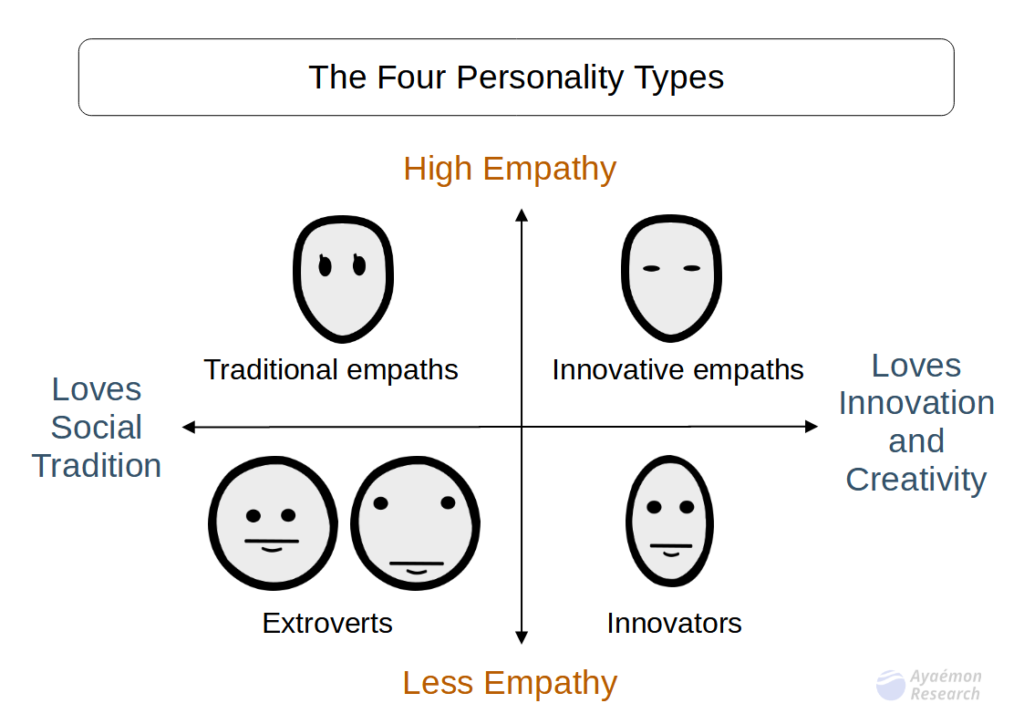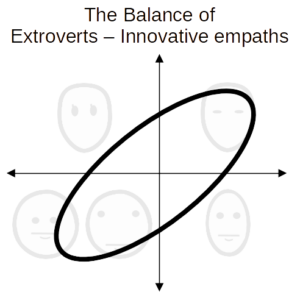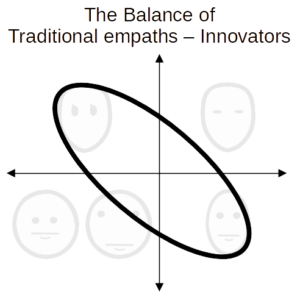Recently, I have explained how to solve mental problems using the Cross-Judging Method. Today, I will summarize and close it.
How to have a stable mind
Sometimes, we want to have a stable mind. Many negative emotions, such as fears of failure, feeling worthless, envy of others, or regrets for our past, upset our minds. They shake our minds and exhaust us.
In such a state, it is hard to learn from the results because other values inside us accuse us.

For example, assume we ignored the inferiority complex, tried to build a business with my favorite, and failed. In that case, our inferiority complex will criticize us, “Why did I ignore the inferiority complex!?” The opposite is the same. If we ignore our individuality and fail, we will blame ourselves, “Why didn’t I try to do what I love?”
That prevents us from receiving feedback from failure. In addition, we repeat the same failures. We go back and forth between what I like and the inferiority complex. We feel no progress in our lives, no matter how we struggle.
A stable mind brings us feedback
On the other hand, if we have a stable mind, we can decide our behavior calmly and accept the results, even if it fails. In this case, we can learn and get feedback from the results because our values are stable. We never accuse our values or our existence, even if we make a loss.

It is like a direction in our lives. If we have a fixed direction toward the goal, we can modify our ways according to the situation. However, if we don’t have it, we cannot advance because we don’t know where to go. A stable mind is like that.
The Cross-Judging Method would be one of the ways to have a stable mind. Today, I will summarize the method.
The four types of personalities
Let me explain our mental judging system. To explain it, I will use the four types of personality that I have frequently introduced. It is as follows:

We have four types of personalities inside of us.
- Extroverts: The personality that wants to compete and win.
- Traditional empaths: The personality that wants to help weak people and maintain society stable and peaceful.
- Innovative empaths: The personality that wants to help weak people and use our individuality.
- Innovators: The personality that wants to compete and win with our individuality.
The multiple values inside us
We could have different kinds of values inside us, like the following:
- The inherent personality: Following it is the most effective way to fulfill ourselves. We cannot change this.
- The personality of the inferiority complex: This tends to be the opposite of our inherent personality.
- The personality of the pang of conscience (or the hatred towards conscience): This tends to be the other side of a high empathy personality (or the less empathic side).
Those three values usually confuse us, in my opinion.

In other words, we have two kinds of confusion about values. One is an inferiority complex. The other is the pang of conscience.
An example of an innovative empath
It may be easier to understand if we see an example. Let’s assume we are innovative empaths. In this case, we tend to have those other values as follows:
- The inherent personality: Innovative empaths
- The personality of the inferiority complex: Extroverts
- The personality of the pang of conscience: Traditional empaths
The balance of an inferiority complex
An inferiority complex is on the opposite side and goes against our natural personalities. It prevents us from living as we are. If we are innovative empaths, we have a mental conflict between extroverts and innovative empaths, as shown in the following figure:

This conflict creates confusion about how to make life positive or get abundance.
In our senses, we will feel this a sense of forward or backward. We feel progress if we follow our inherent personality. On the other hand, after we follow the inferiority complex, we will feel like we took a step backward, even if we accomplished the inferiority complex.
Perhaps this is easy to judge by our reason. We can find which is better for us in the long term, even if we need the courage to make progress. If we want a short-term result, we can use the inferiority complex.
The balance of the pang of conscience
On the other hand, the pang of conscience (or the hatred towards conscience) is a conflict between the other empathic personality and its opposite personality. If we are innovative empaths, we have a mental conflict between traditional empaths and innovators, as shown in the following figure:

This conflict creates confusion about how to prevent suffering in life. One example is a style to avoid repeating traumatic past events.
If we lean toward the empathic personality, we tend to feel guilty about ourselves, accuse ourselves, and sacrifice ourselves. On the other hand, if we lean toward the less empathic side, we tend to be offensive and blame others.
If we balance this, we can allow the past because we understand it has both good and bad aspects.

In our senses, we will feel this as the option between the right and left ways. Two options are before us. We feel we have to choose one of them. The conflict inside us shakes us right and left.
Neither of these options is correct because neither of those personalities is ours. This is not forward or backward. In other words, we have to balance it. That brings us a new, right way.
A tactic to balance the mental state
The above logic tells us there are two balances of values.
The Cross-Judging Method is a way to balance it. We can have a stable mental state by dividing our values into two axes. That will shape X-shaped axes in the figure of the following:

Steps to progress our lives
This awareness will give us a tactic to solve our mental problems. It is as follows:
- Set our goals. It is the life of the inherent personality. We head to it.
- Find out which axis of the X-shape our current mental worries fall into.
- Judge according to the axis.
- If it is the balance of an inferiority complex, we judge whether it is for the short term or the long term. It means making progress or not.
- If it is the balance of the pang of conscience, we keep a balance or ignore it. Both options will make no difference. It means both options don’t affect our lives.

The closer we get to our goals, the smaller the worries of another axis will be because we will be able to live as we are. In other words, we can even ignore the balance of the pang of conscience. That understanding might give us the courage to progress.
Another tactic: stabilizing the unstable side
Another tactic is stabilizing the more unstable side, although this is the same as the previous tactic after all. If we stabilize one side, the other will also stabilize.
In my case, I first balanced the pang of conscience a week ago. I was too sensitive to the personality of the traditional empath, the axis of the pang of the conscience. After I balanced it by stimulating the other side, the innovator’s personality, I got a stable mind.

That allowed me to balance the other side, the balance between extroverts and innovative empaths, the axis of the inferiority complex. I soon understood my strange behavior: I had forced myself to feel sadness when I parted with something. One side of stability brought me another side of stability.
Conclusion
Above is the summary of the Cross-Judging Method.
We can have a stable mental state by balancing two axes based on four types of personalities. It is a judgment by the X-shaped axes.
This wisdom might help us remove our mental confusion and bring us a calm mind.
Thank you for reading this article. I hope to see you in the next one.


